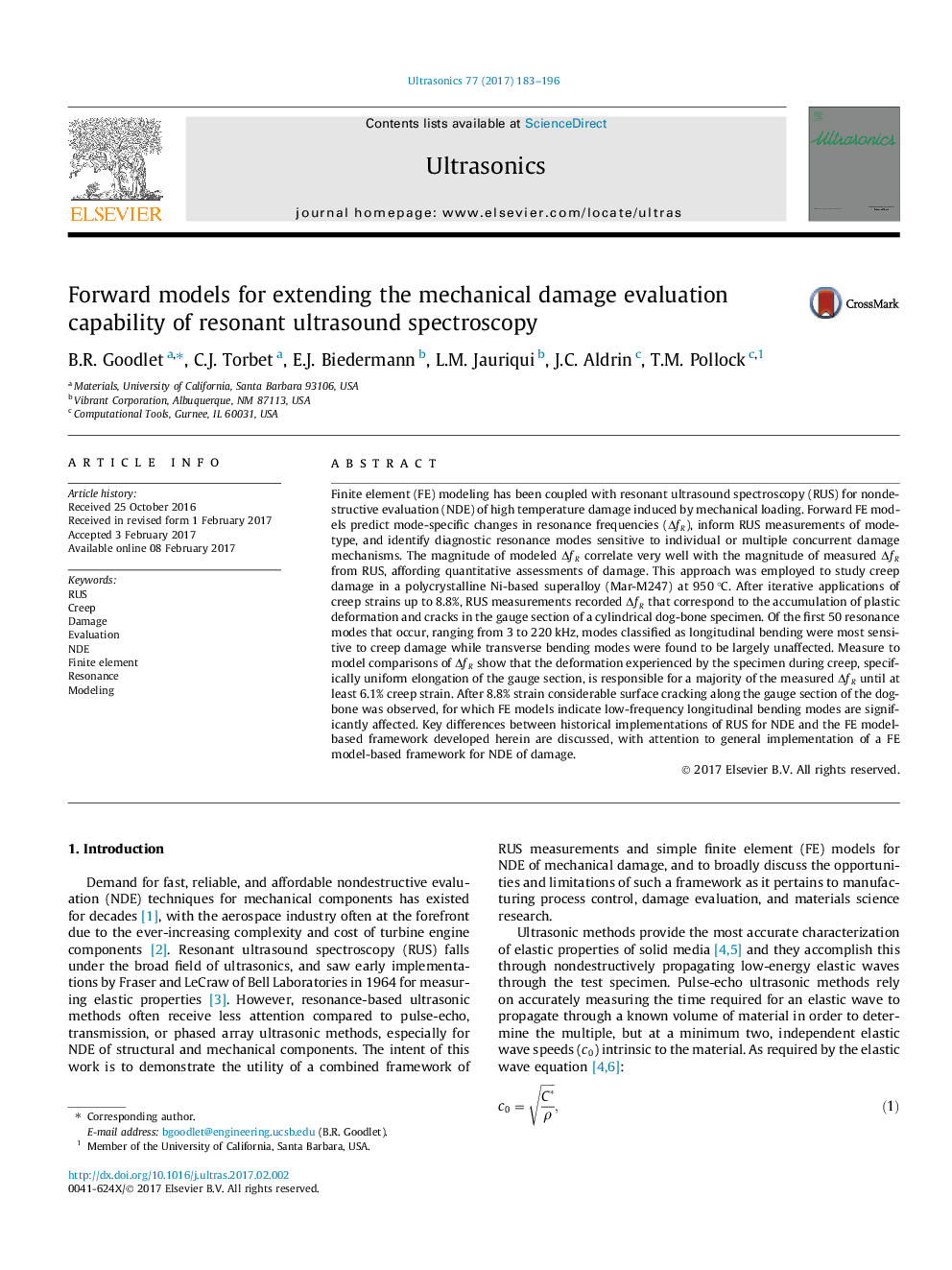| کد مقاله | کد نشریه | سال انتشار | مقاله انگلیسی | نسخه تمام متن |
|---|---|---|---|---|
| 5485346 | 1523192 | 2017 | 14 صفحه PDF | دانلود رایگان |
- A novel framework for nondestructive evaluation with resonance is established.
- Multiple damage mechanisms, including creep deformation and cracks, are evaluated.
- FE models capture the dominant damage mechanisms affecting resonance.
- Experiments on Ni-based superalloy samples validate FE models and NDE methods.
Finite element (FE) modeling has been coupled with resonant ultrasound spectroscopy (RUS) for nondestructive evaluation (NDE) of high temperature damage induced by mechanical loading. Forward FE models predict mode-specific changes in resonance frequencies (ÎfR), inform RUS measurements of mode-type, and identify diagnostic resonance modes sensitive to individual or multiple concurrent damage mechanisms. The magnitude of modeled ÎfR correlate very well with the magnitude of measured ÎfR from RUS, affording quantitative assessments of damage. This approach was employed to study creep damage in a polycrystalline Ni-based superalloy (Mar-M247) at 950 °C. After iterative applications of creep strains up to 8.8%, RUS measurements recorded ÎfR that correspond to the accumulation of plastic deformation and cracks in the gauge section of a cylindrical dog-bone specimen. Of the first 50 resonance modes that occur, ranging from 3 to 220 kHz, modes classified as longitudinal bending were most sensitive to creep damage while transverse bending modes were found to be largely unaffected. Measure to model comparisons of ÎfR show that the deformation experienced by the specimen during creep, specifically uniform elongation of the gauge section, is responsible for a majority of the measured ÎfR until at least 6.1% creep strain. After 8.8% strain considerable surface cracking along the gauge section of the dog-bone was observed, for which FE models indicate low-frequency longitudinal bending modes are significantly affected. Key differences between historical implementations of RUS for NDE and the FE model-based framework developed herein are discussed, with attention to general implementation of a FE model-based framework for NDE of damage.
Journal: Ultrasonics - Volume 77, May 2017, Pages 183-196
